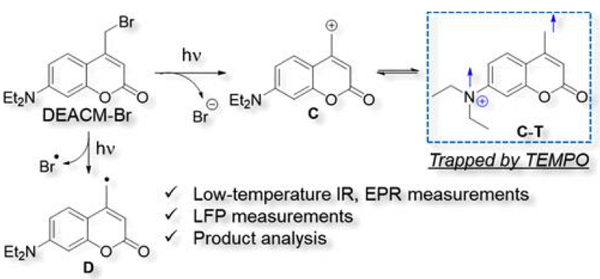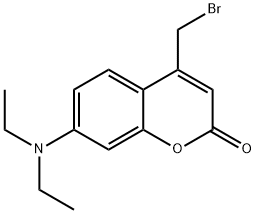7-Diethylamino-4-methyl coumarin (DEACM) derivatives are widely used as photolabile protecting groups. The photolysis of 4-(Bromomethyl)-7-(diethylamino)coumarin (DEACM-Br) with Br as the leaving group was investigated by Takanoet al. The main reaction path was found to be the generation of radical D via homolytic C–Br bond cleavage. Interestingly, products derived from C-T, the triplet state of the carbocation intermediate (i.e., 7-(diethylamino)-4-methyl cation (C)), were identified, thereby confirming the existence of C-T for the first time[1].


